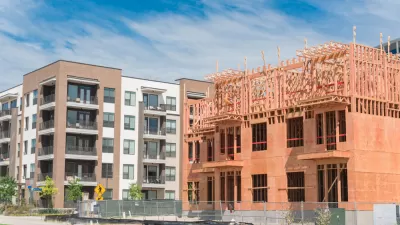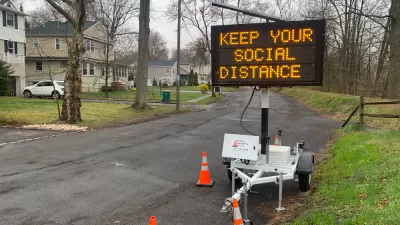The relief that renters have been seeking might finally be on the way, if several market indicators are to be believed. If and when rent does fall, supply might have finally caught up with demand.

According to an article by Joe Cortright, "there are a few hopeful indicators from housing markets that the long promised relief from increased supply is starting to show up, at least in a small way."
Cortright cites two reports, "one national, and one quite local," as evidence of a market shift. The first is a market analysis from REIS, which specializes in "[following] national trends in apartment construction tracking delivery (the completion of new apartments) and absorption (how many newly completed apartments get leased." Cortright summarizes the news from this source:
REIS analysts are reading the data to suggest that construction of new apartments is finally starting to have an impact on the market. REIS’s Scott Humphreys says: “It’s official: developers are finally building more apartments than there are renters to fill them.”
Also of relevance to the national rental market is a post on the Calculated Risk blog, which shares vacancy rates from the National MultiFamily Housing Council (NMFC). "Their data show that 'market tightness' has been trending downwards for the past couple of years," writes Cortright.
For local evidence of those trends, Cortright calls on a Boston Globe report that finds rents in Boston increasing at the slowest rate in the past five years. "The news from Boston echoes reports from markets as diverse as Seattle, Denver, and Houston, that the growing number of new properties being completed is producing at least temporarily higher vacancy rates and more favorable rental offerings for tenants," adds Cortright.
FULL STORY: Nationally, apartment supply may be catching demand

Maui's Vacation Rental Debate Turns Ugly
Verbal attacks, misinformation campaigns and fistfights plague a high-stakes debate to convert thousands of vacation rentals into long-term housing.

Planetizen Federal Action Tracker
A weekly monitor of how Trump’s orders and actions are impacting planners and planning in America.

In Urban Planning, AI Prompting Could be the New Design Thinking
Creativity has long been key to great urban design. What if we see AI as our new creative partner?

King County Supportive Housing Program Offers Hope for Unhoused Residents
The county is taking a ‘Housing First’ approach that prioritizes getting people into housing, then offering wraparound supportive services.

Researchers Use AI to Get Clearer Picture of US Housing
Analysts are using artificial intelligence to supercharge their research by allowing them to comb through data faster. Though these AI tools can be error prone, they save time and housing researchers are optimistic about the future.

Making Shared Micromobility More Inclusive
Cities and shared mobility system operators can do more to include people with disabilities in planning and operations, per a new report.
Urban Design for Planners 1: Software Tools
This six-course series explores essential urban design concepts using open source software and equips planners with the tools they need to participate fully in the urban design process.
Planning for Universal Design
Learn the tools for implementing Universal Design in planning regulations.
planning NEXT
Appalachian Highlands Housing Partners
Mpact (founded as Rail~Volution)
City of Camden Redevelopment Agency
City of Astoria
City of Portland
City of Laramie





























